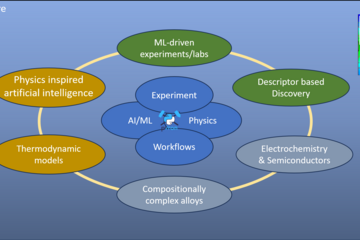All genres
21.
Talk
Effect of composition and nanolayering on mechanical properties of Zr100-xCux thin film metallic glasses. 11th European Solid Mechanics Conference - ESMC 2022, Galway, Ireland (2022)
22.
Talk
Toward engineered thin film metallic glasses with large mechanical properties: effect of composition and nanostructure. Seminar at Laboratoire des Sciences des Procédés et des Matériaux (LSPM), Paris Nord University, Paris, France (2021)
23.
Talk
Detection of estradiol by a SERS sensor based on TiO2 covered with gold nanoparticles. Applied Nanotechnology and Nanoscience International Conference – ANNIC 2019, Paris, France (2019)
24.
Poster
On the mechanical properties and thermal stability of ZrxCu100-x thin film metallic glasses with different compositions. Nanobrücken 2021 - Nanomechanical Testing Conference virtual event, Düsseldorf, Germany (2021)
25.
Poster
Effect of composition on mechanical properties and thermal stability of ZrCu thin film metallic glasses. European Materials Research Society (E-MRS) Spring Meeting 2021, Virtual Conference, Strasbourg, France (2021)
26.
Poster
From epitaxially grown thin films to grain boundary analysis in Cu and Ti. International Workshop on Advanced and In-situ Microscopies of Functional Nanomaterials and Devices, IAMNano, Düsseldorf, Germany (2019)
27.
Thesis - PhD
Design of ZrCu thin film metallic glasses with tailored mechanical properties through control of composition and nanostructure. Dissertation, RUB Bochum, Bochum, Germany (2025)
28.
Preprint
Thermal modification of ZrCu metallic glass nanolaminates: Structure and mechanical properties. arXiv (2024)


